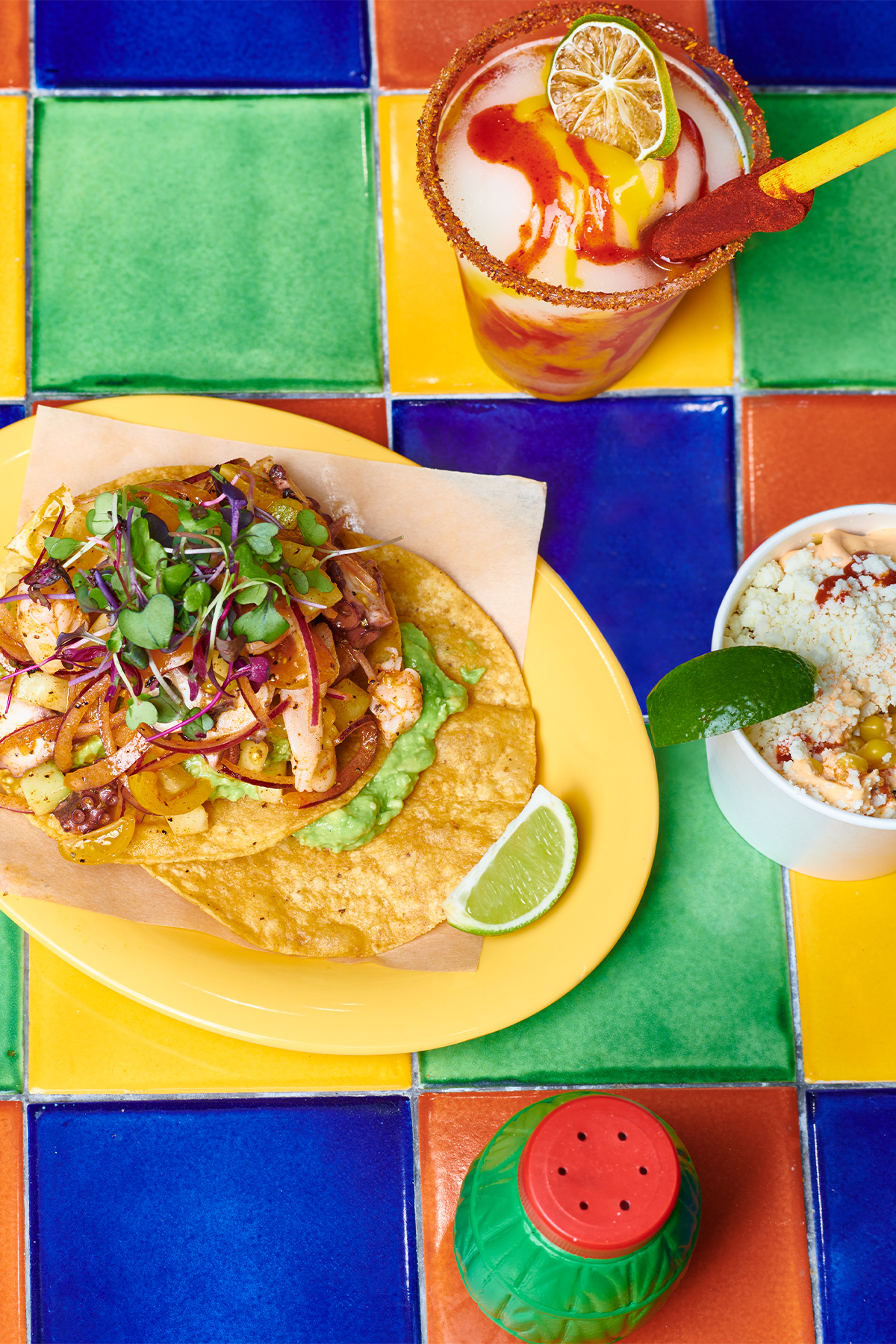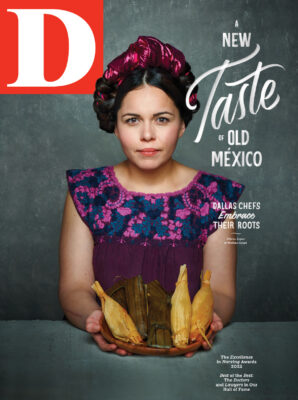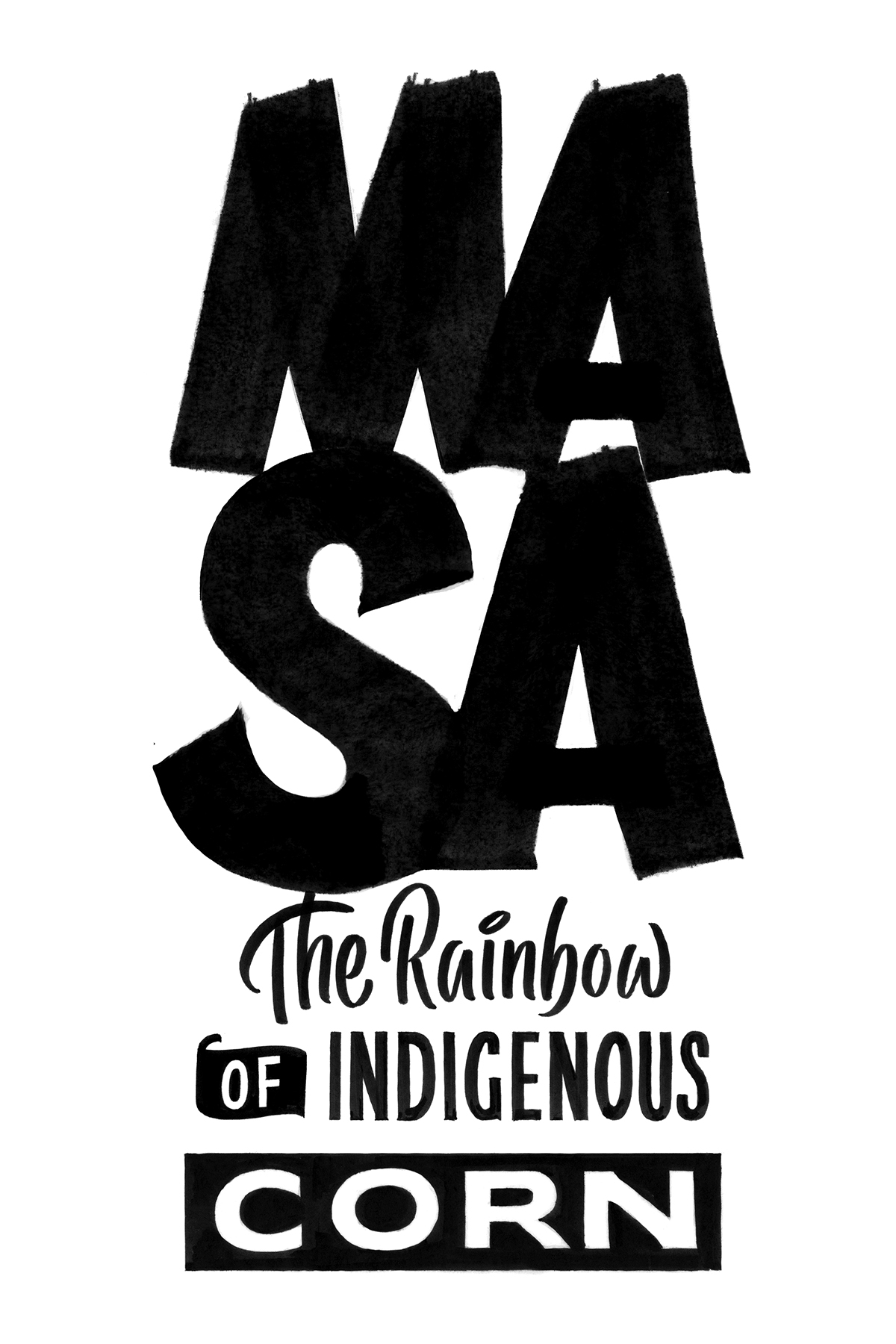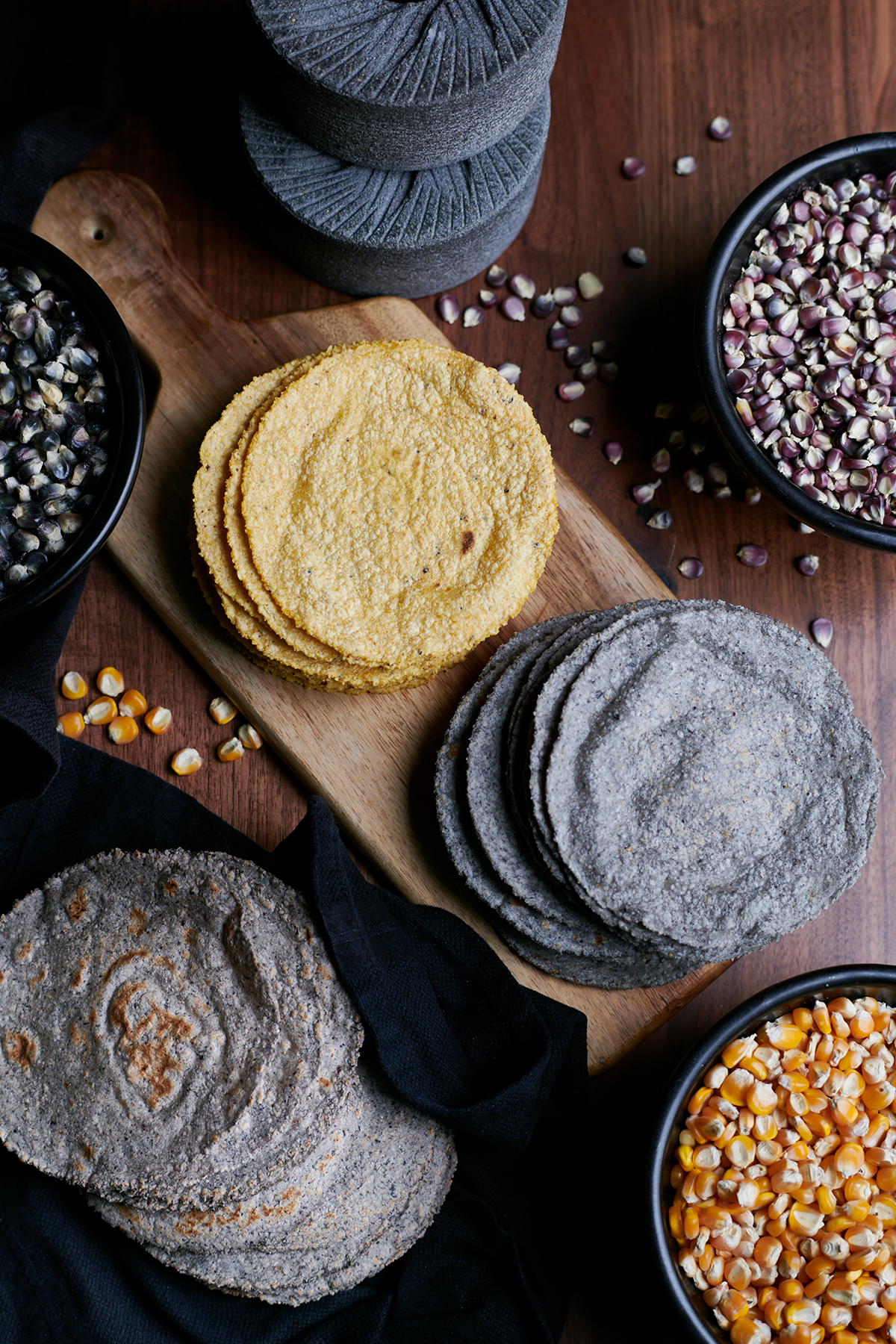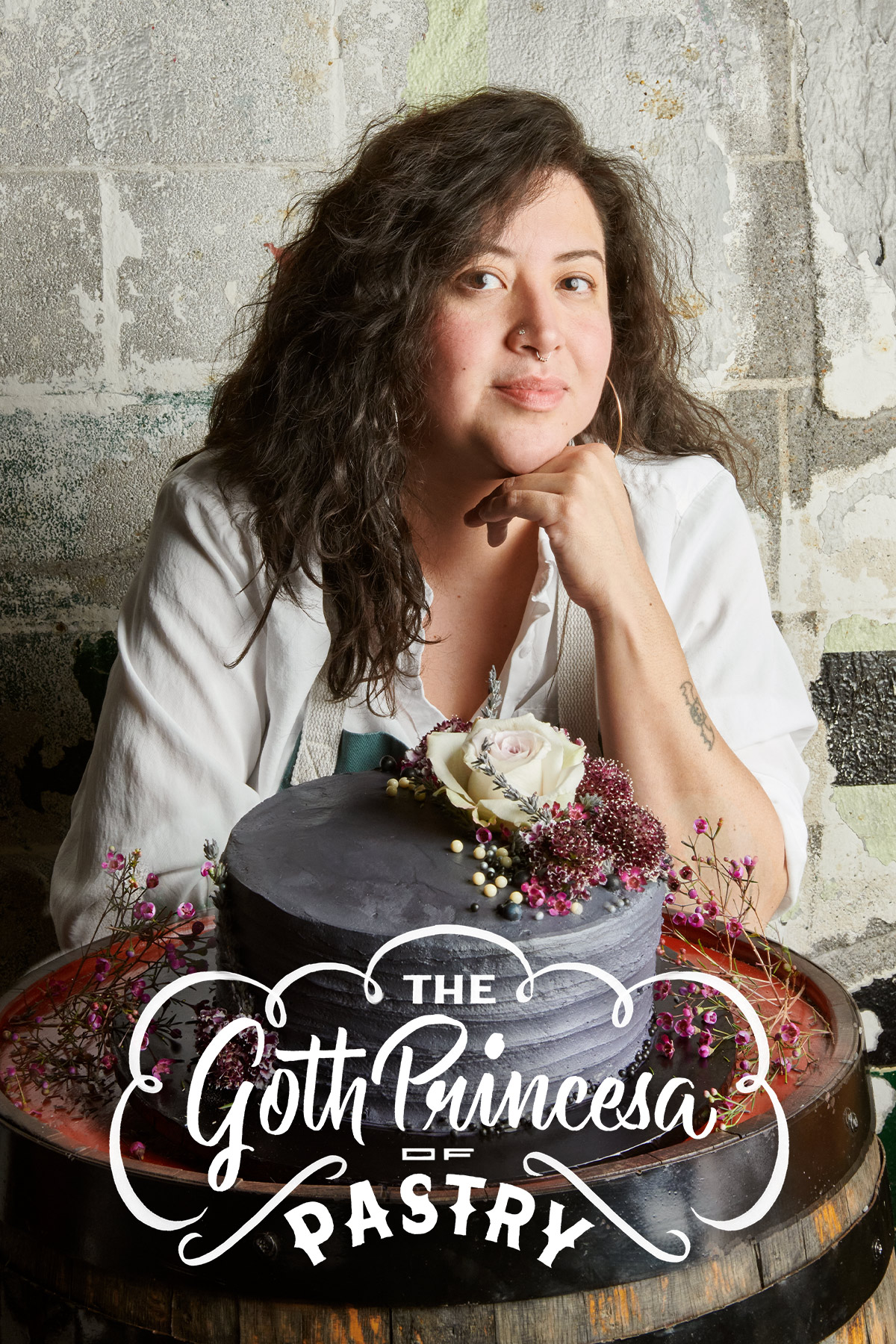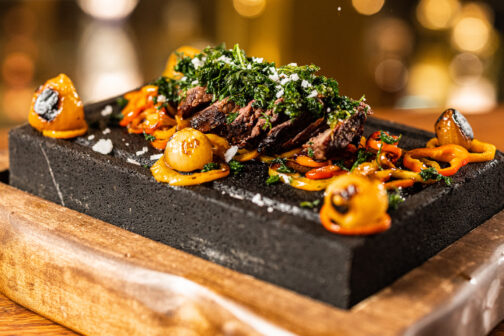Over the last handful of years, we’ve seen the focus on regional Mexican cuisine flourish, with traditional techniques and flavors and heirloom, Mexican-sourced ingredients. In a city still so rooted in Tex-Mex, in endless bowls of chips and salsa and plates drenched in bright-yellow cheese, chefs and bartenders and restaurateurs are delving deeper into the roots of the cuisine and showing Dallas the multifaceted world of, well, Mex-Mex, let’s call it.
Masa
In her prep kitchen off of Harry Hines, Olivia Lopez—a former fine-dining chef who sells her wares under the name Molino Olōyō—makes masa her muse. Tubs of indigenous corn kernels stand ready: dusky rose, yellow-white, and somber blue. Some are for tortillas, some for tamales and other purposes. Sourced from Tlaxcala, Oaxaca, and other states, the whole grains are soaked overnight in culinary lime to soften the hulls and release the nutrients in a traditional process called nixtamalization.
The molino Lopez bought for this work grinds the kernels between grooved stone disks and spits out blobs of heathered, speckled masa whose aroma is specific to each variety. They’re like nothing that’s ever cradled a Velveeta cheese–laden enchilada.
Lopez uses the masa in atole (a warm, masa-thickened drink) and corn ice cream, into which she puts house-made pinole—toasted ground corn powder mixed with spices that gives the dessert a caramelized, candy-corn flavor. She combines varieties to create swirled tortillas, and she pinches and flattens the plain dough to recover the forms of her childhood, fashioning all of the various masa-based shapes she watched her grandmother make in Colima.
She’d love to grow seasonal huitlacoche (corn fungus) on sweet corn; mushroom expert Jordan Jent of Texas Fungus might help her. This is her way of bringing back the rainbow that was reduced to a single color by commodified corn.
Regino Rojas, a native of Michoacán and another revolutionary diehard, similarly lets the corn guide him. “Once I grind it and taste it, then I will be able to determine where we should go with it,” he says. His heirloom corn becomes tortillas that become canvases for oyster mushrooms and wagyu beef and seafood in inventive, multicourse tasting menus at La Resistencia, sister to his more casual Revolver Taco Lounge.
“It’s really time-consuming, but I think it’s worth it,” says El Paso-born Tony Ibarra. At the newly opened La Mina in The Village, his team nixtamalizes bolito amarillo corn and rolls the masa into little balls for pliant, pillowy tortillas. “I’ve told people, ‘Yo, we really can’t mess this up, because it’s such a long process that, if we mess it up, we might not have tortillas for that day.’ ”
These local champions of tradition are all interested in Mexico’s patchwork fields of multihued corn, cultivated according to ancestral methods. They have all gone to the source to procure kernels and the molinos to grind them. And they all agree that a handmade tortilla is like no other, a direct link to the roots of anyone who knows the secrets of corn, the ancient-modern staple. —E.H.A.
The Shape of Masa
Masa comes in myriad, marvelous shapes. Here’s how to identify each one.
Tortilla
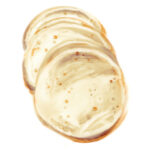 A circular unleavened flatbread.
A circular unleavened flatbread.
Tetela
 A thin, stuffed triangular pocket.
A thin, stuffed triangular pocket.
Tamal
 Generally a plump cylinder, made fluffy with baking powder and wrapped in a corn husk (or banana leaf, in which case the result tends to be square or rectangular).
Generally a plump cylinder, made fluffy with baking powder and wrapped in a corn husk (or banana leaf, in which case the result tends to be square or rectangular).
Tlayuda
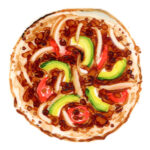 A large toasted disk covered with toppings.
A large toasted disk covered with toppings.
Gordita
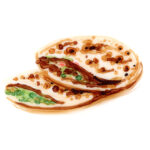 A thick patty that’s split and stuffed.
A thick patty that’s split and stuffed.
Tlacoyo
 A small stuffed oval or rhomboid.
A small stuffed oval or rhomboid.
Huarache
 The name means “sandal”; the large oblong is topped.
The name means “sandal”; the large oblong is topped.
Sope
 A round, fried masa base with pinched edges that hold toppings.
A round, fried masa base with pinched edges that hold toppings.
The Queen of Infused Masa
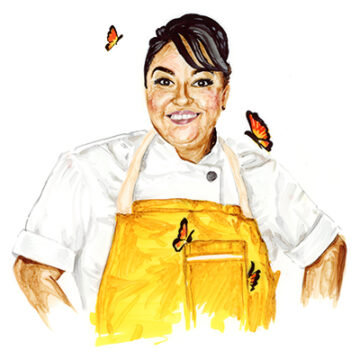
Anastacia Quiñones-Pittman started creating infused masa while she was at Komali and The Cedars Sociál, and now she continues to employ the skill at José. She’s made tortillas tinted with squid ink and others flavored with vibrant purées. A taco might hold duck and local cherries swathed in almond mole on an almond tortilla.
“While I was at Komali, we would do blue corn and guajillo or ancho tortillas,” she says. “One day it was really slow, and I grabbed five or six bowls and thought, What can I purée and add instead of water to the masa? The very first ones were carrot, cilantro, squid ink, mole, and beet. I whipped out my culinary book. What goes well with beets? This. What goes well with carrots? This.”
Now, a daily rotating menu of tacos de tacha at José feature her creations.
Seafood
When Jesus Carmona opened Tacos Mariachi in 2015, he knew he could go the simple, traditional route and he would be just fine. There was another, riskier path. The Mexico City native could, instead, turn it into a more bombastic, gourmet-driven taqueria. He chose the latter. “I do something authentic but different, which is mainly seafood,” says Carmona, who decided to import the food he used to buy from street carts across the Baja region, the flavors with which he first fell in love.
People told him he was crazy: “In Texas, people only eat barbacoa.” While other taco shops were extolling the virtues of carne asada and al pastor, Carmona was drawing lines for his famous grilled pulpo taco, gloriously tender in all the best ways. There’s also the smoked salmon taco on a corn tortilla with asadero cheese and crema fresca. Chile de arbol-spiced shrimp tacos delighted diners, too. All of which—and much more—you can find at his latest restaurant, Milagro Taco Cantina in Trinity Groves.
Whereas Carmona brings Baja to Big D, Fino Rodriguez, chef and co-owner of Taquero on the edge of Old East Dallas, showcases seafood dishes of San Luis Potosí, his home state, as well as Sinaloa and Jalisco. “The way we make things here at Taquero comes from the teachings of my late grandmother, Nieves,” Rodriguez says. Nieves taught him how to make ceviche with homemade mayonnaise. In San Luis, he says, “you are going to find ceviche at almost every restaurant or food stand you encounter.” You’ll find it at Taquero, too, where Rodriguez puts a piece of home on the menu. —R.S.
Pastries
Diana Zamora’s culinary fingerprints are all over some of Dallas’ favorite dessert menus. You might have had one of her elote flan creations at José or dipped a spoon into her peanut butter cheesecake with cajeta, coconut, and strawberry jam at Encina. In the summertime, her paletas cool down Elm & Good’s customers. She hasn’t wanted to stay in any one place for too long. “That’s not really my thing,” she says. Now, though, she has a virtual home base: Nena Postreria.
Her bakeshop—as of yet without a physical location—is named for her mother, Reyna Margarita, whom everyone calls Nena. As sweet as that is, Zamora explains, “I’m like this chola goth princess,” which is to say her desserts can take on a split personality. She plays with mezcal and spice, but she adorns them with edible flowers. And despite being allergic to the herb, Zamora loves making an oregano olive oil cake that’s soaked in guava syrup and topped with a simple vanilla bean whipped cream.
It’s very much in line with her pastry modus operandi: full of flavor without being chokingly sweet. —R.S.
The Mex-Mex Pioneers
Remember this lesson: if at first you don’t succeed, fry another duck flauta.
Lest we think that the focus on regional Mexican cuisine happened quickly, in the time it takes to puff a fresh tortilla on the comal, it is worth a reminder that Mexico City–born restaurateur Monica Greene sowed the seeds more than a decade ago. She made a name for herself opening institutions that were ahead of their time: at Aca y Alla, smoldering red walls were theatrical; at Ciudad, duck flautas lured diners.
Meanwhile, at Komali, which opened in 2010, Abraham Salum drew on his own upbringing in Mexico City to lovingly highlight churros with hot chocolate or crêpes with cajeta made from local goat milk. His enchiladas were beautiful, emphasizing fresh ingredients. Anastacia Quiñones-Pittman, who would later become a leader of a new approach to contemporary, regional Mexican cuisine, first infused nixtamalized masa with beet, mole, or cilantro here.
Not far away, on Henderson Avenue, Alma—which opened and closed in 2011—offered chicharron-crusted lamb chops with butternut-squash mole.
Yet Tex-Mex expectations were strong, and the chefs encountered resistance to their takes. “It was fighting why we didn’t put chips and salsa on the menu,” Salum says. “Endless chips and salsa.”
But the pioneers were undeterred. They incorporated ingredients such as fresh nopales and huitlacoches. They stripped away the red, white, and green decor and the vats of queso. And when asked for a margarita, bartenders such as Leann Berry, one of the early queens of mezcal (who worked for both Greene and Salum), inquired, “What kind do you want?” Prickly pear or tamarind, maybe?
“Monica started the whole movement in Dallas,” Salum says. But “Komali really stamped it,” Quiñones-Pittman counters.
These intrepid chefs laid the foundation, even if all of their initial endeavors closed. “Unfortunately,” Quiñones-Pittman says, “we just weren’t ready.”
Now, thankfully, we are. —E.H.A.
Mole
In Nahuatl—the language of the Indigenous peoples that settled Mexico—“mole” means “sauce.” Simple, right? Not so fast. The idea that there is one type of mole is a fallacy. While people may think of the dark, chocolate-rich mole that often blankets chicken, the state of Oaxaca alone has seven different canonized forms, and every state, valley, and family has its own version of the complex potion, thick with nuts, seeds, spices, and chiles.
- Pink
- White
- Pipian Verde
- Black
- Red
- Yellow
- Manchamanteles
Blushing rose with native pink pine nuts—and often amped up with beet, pomegranate, or hibiscus blossoms—this mole hails from the state of Guerrero. You might find it enhanced with beets at José (though it’s currently off the menu). And Tulum has, in the past, served a version that is a bit more purple.
Based on pale nuts—almonds, pine nuts, macadamia nuts, pecans—white moles are mild but rich. Their creaminess may swaddle mushrooms or chicken. Olivia Lopez of Molino Olōyō uses white mole at her plated private dinners.
Pumpkin seeds bolster pipian verde mole. It gets verve from green chiles such as jalapeños or serrano chiles, while the brightness from tomatillos and cilantro brings out the sweetness of seafood or pork. Find hazelnut pipian at Jalisco Norte and more traditional versions at La Resistencia and La Mina.
The darkest of moles, black mole gets its layered complexity from roasted peanuts and the charred chiles and tortillas that give it a midnight hue. It’s smoky, bewitching, and intense. You’ll find mole chichilo, a cousin, alongside carne asada at Tulum. Find a laborious kombu-based version at La Mina.
Rich in guajillo, ancho, and pasilla chiles, red mole is a balance of sweet, spicy depth. It feels destined for duck, chicken, and turkey. Find family recipes at La Resistencia and at Molino Olōyō dinners.
One of Oaxaca’s classic moles, this sauce is not yellow as the name would suggest but ranges in shades from golden to amber or vivid orange-red. It’s made with rarer, yellow-hued, fruity chiles such as puya, chilhuacle, chilcostle, and costeño. Find it with steak or with shrimp on tacos at La Mina.
One of the seven traditional Oaxacan moles, fruity manchamanteles—meaning “tablecloth-stainer”—is often served at festive occasions such as weddings or quinceañeras. It features seasonal fruits such as pineapple, plantain, apple, peach, and mango for a smoky sweetness almost like—dare we say it?—barbecue sauce. José Meza at Tulum serves it with lamb chops and minty rice.

The “generational” mole that chef Anastacia Quiñones-Pittman serves at José is legendary. Made from a long-ago-formed base, it is renewed over and over, gathering depth of flavor. The vegan, shape-shifting concoction is tended like the Olympic torch that never goes out. She explains:
“We started it on January 3, 2019. We just add the old batch to the new batch. We’ve never run out. Sometimes we’ll be out of dried apricots, and we’ll use raisins. We’ll be out of pepitas, so we’ll use pecans. But there’s only one person that makes it. And she’s amazing. No one’s made it since. When we had Snowmaggedon, she’d hid some in the freezer. I was crying thinking we’d lost it! Some people use toasted bread. We use tortillas, so it’s gluten-free. Always ancho, guajillo chiles—sometimes pasilla if we don’t have ancho. And then we’ll char a poblano or sometimes a jalapeño. Sesame seeds, always. Once we did a charcuterie board and brought in dried apricots. I thought, Throw those in there—why not? And we just kept the process. Oregano, coriander. The chocolate varies. We’ll use Dude, Sweet when available or Abuelita or Ibarra. It’s like 27 ingredients. We roast the tomatoes, onion, chiles, garlic. We’ll start with that base and add tomato-water once we get everything roasty-toasty. A lot of people think it’s my mom’s recipe. I don’t know how that happened. My mom never made it. If my dad craved mole, she went out and bought some. So I had to learn on my own.”
Pulque
The Drink of the Gods
Luis Villalva remembers going to pulquerías in his hometown of Mexico City. Inside these watering holes patrons drank pulque, a traditional milky beverage made from fermented agave (maguey) sap. Known in pre-Colonial Mexico as “la bebida de los dioses,” it’s often sweetened with piloncillo and flavored with fruits. Or you can get a savory version with tomato juice. There’s no limit to what pulque infusions, known as curados, you can make.
At La Viuda Negra, the speakeasy bar tucked next to El Come Taco, which Villalva runs with his brother Javier, a rotating menu of curados skew slightly sweet. There’s avocado, his favorite; one made with coffee; occasionally a piñon (pine nut) flavor; mazapan (a peanut candy); and strawberry. “We try to keep it classic,” Villalva says, “like what you’d get at a cantina.”
At Ayahuasca Cantina, you’ll find “curados de pulque” on the cocktail menu. Slurp up versions made with tamarindo, mango, guava, or maracuya, aka passion fruit.
Ruins carries Hacienda 1881, pasteurized pulque in a can with no special infusions, but you can—and should—get a wedge of lime or a glass of juice to cut the drink’s subtly yeasty qualities. —R.S.
Cabrito Celebrations: A Memory from Aileen Jimenez
I grew up on just about any traditional Mexican dish you can think of. But the one native to my family’s Nuevo Leon roots is cabrito. Cabrito is a kid goat yet to be weaned off its mother’s milk, and, typically, it is saved for very special occasions. You have to make sure the cabrito is no more than 40 to 45 days old and still milk fed, otherwise you risk compromising the flavor and texture of the meat. Believe me: you will know it is not cabrito, because adult goat is very gamey and stringy. (My mother has always gotten hers from a rancher in Austin; she has trust issues. If you don’t want to cook your own, go to Cabritos Los Cavazos.)
Traditionally, you will see cabrito cooked spread out and spit roasted, and the only seasoning the tender, light-colored meat really needs is salt. On a Sunday night, my mother will slice up tomatoes, onions, and avocado, make an angry salsa, and lay out warm corn or flour tortillas. My father will bring in the cabrito straight off the fire, and our family will fill the table. The special occasion: to eat cabrito. —Aileen Jimenez

We asked Anastacia Quiñones-Pittman and Abraham Salum where they go to get their Mex-Mex fix. These are their picks.
- Tipico’s The restaurant is known for its menudo, but Quiñones-Pittman goes for the guisos. “They have red and green—red is my favorite. You can get them in corn or flour tortillas, but get the flour.”
- Margarita’s Mexican Restaurant Across from Strangeways on Fitzhugh, Margarita’s lures with guisos, too. “Their red guiso is so hot, but it’s really, really good,” Quiñones-Pittman says. “Super spicy.”
- Abby Restaurant Inside what used to be a Whataburger, this family-owned gem is homey. Their gorditas and elotes are on point. “Nothing out of the ordinary, but just really good,” Salum says.
- El Tizoncito It may be “more of a chain,” Quiñones-Pittman says, “but their flautas are awesome.”
- Cuquita’s Restaurant This mini-chain has been around for decades, and its dishes have stayed consistent over the years. “Their green enchiladas are one of my favorites in town,” Quiñones-Pittman says.
Mex-Mex Guide
Abby Restaurant
Northwest Dallas
2955 Walnut Hill Ln. 214-468-4608
Ayahuasca Cantina
North Oak Cliff
334 Jefferson Blvd. 469-687-0005
Cabritos Los Cavazos
Northwest Dallas
10240 N. Walton Walker Blvd. 972-707-7020
Cuquita’s Restaurant
Multiple locations
1957 Northwest Hwy., Garland
El Tizoncito
Multiple locations
3404 W. Illinois Ave., Ste. 100 214-330-0839; 5150 Lemmon Ave., Ste. 111 214-521-0201
José
Park Cities
4931 Lovers Ln. 214-891-5673
La Mina
Upper Greenville
5630 Village Glen Dr. 469-659-6375
La Viuda Negra
Old East Dallas
2513 N. Fitzhugh Ave. 214-821-3738
Margarita’s Mexican Restaurant
Old East Dallas
2414 N. Fitzhugh Ave. 214-821-9366
Milagro Taco Cantina
West Dallas
440 Singleton Blvd., Ste. 100 469-872-0168
Molina Olōyō
@molino_oloyo
Monica’s Mex-Tex Cantina
The Cedars
1326 Botham Jean Blvd. 214-928-7700
Revolver Taco Lounge
Deep Ellum
2701 Main St., Ste. 120 214-272-7163
Ruins
Deep Ellum
2653 Commerce St. 972-707-0607
Taquero
Old East Dallas
5434 Ross Ave. 469-372-6049
Tipico’s
Northwest Dallas
3118 W. Northwest Hwy. 214-357-9296
Tulum
Oak Lawn
4216 Oak Lawn Ave. 972-677-9747
Get the SideDish Newsletter
Authors

Eve Hill-Agnus
View Profile


